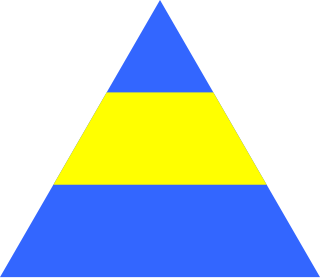
The 42nd Infantry Division was an infantry division of the British Army. The division was raised in 1908 as part of the Territorial Force (TF), originally as the East Lancashire Division, and was redesignated as the 42nd Division on 25 May 1915. It was the first TF division to be sent overseas during the First World War. The division fought at Gallipoli, in the Sinai desert and on the Western Front in France and Belgium. Disbanded after the war, it was reformed in the Territorial Army (TA), in the Second World War it served as the 42nd Infantry Division with the British Expeditionary Force (BEF) and fought in Belgium and France before being evacuated at Dunkirk. The division was later reformed in the United Kingdom and, in November 1941, was converted into the 42nd Armoured Division, which was disbanded in October 1943 without serving overseas. A 2nd Line duplicate formation, the 66th Division, was created when the Territorials were doubled in both world wars.

The Manchester Regiment was a line infantry regiment of the British Army in existence from 1881 until 1958. The regiment was created during the 1881 Childers Reforms by the amalgamation of the 63rd Regiment of Foot and the 96th Regiment of Foot as the 1st and 2nd battalions; the 6th Royal Lancashire Militia became the 3rd (Reserve) and 4th battalions and the Volunteer battalions became the 5th, 6th, 7th, 8th, 9th and 10th battalions.

The Lancashire Fusiliers was a line infantry regiment of the British Army that saw distinguished service through many years and wars, including the Second Boer War, the First and Second World Wars, and had many different titles throughout its 280 years of existence. In 1968 the regiment was amalgamated with the other regiments of the Fusilier Brigade – the Royal Northumberland Fusiliers, Royal Warwickshire Fusiliers and the Royal Fusiliers – to form the current Royal Regiment of Fusiliers.

The South Lancashire Regiment was a line infantry regiment of the British Army in existence from 1881 to 1958.

The 7th Light Mechanised Brigade Combat Team is a formation in the British Army with a direct lineage to 7th Armoured Brigade and a history that stretches back to the Napoleonic Wars. It saw active service in the Crimean War, the Second Boer War and both the First and the Second World Wars. In 2014, the 7th Armoured Brigade was re-designated as 7th Infantry Brigade, thereby ensuring that the famed "Desert Rats" continue in the British Army's Order of battle.

The Border Regiment was a line infantry regiment of the British Army, which was formed in 1881 under the Childers Reforms by the amalgamation of the 34th (Cumberland) Regiment of Foot and the 55th (Westmorland) Regiment of Foot.
The 158th Infantry Brigade was an infantry brigade of the British Army that served in both the First and Second World Wars, before being disbanded in 1968. Throughout its existence the brigade was assigned to the 53rd (Welsh) Infantry Division and was composed almost entirely of Territorial battalions from the Royal Welch Fusiliers.

The 125th Brigade was an infantry brigade formation of the British Army that saw active service during both the First and Second World Wars. It was assigned to the 42nd Division and served in the Middle East and later in the trenches of the Western Front in the First World War. In the Second World War the brigade, now redesignated 125th Infantry Brigade, fought in Belgium and France before being evacuated at Dunkirk and was then converted into 10th Armoured Brigade.

The 126th Brigade was an infantry brigade of the British Army during the First World War and the Second World War. It was assigned to the 42nd Division and served in the Middle East and on the Western Front in the Great War. In the Second World War, now as the 126th Infantry Brigade, it served again with the 42nd Division in France and was evacuated at Dunkirk and then later converted into 11th Armoured Brigade.

The 127th (Manchester) Brigade was an infantry brigade of the British Army that saw active service during both the First and Second World Wars. It was assigned to the 42nd Division and served in the Middle East and on the Western Front in the First World War.
The 164th Brigade was an infantry brigade of the British Army that saw active service in the First World War as part of the 55th Division. As the 164th Infantry Brigade, it remained in the United Kingdom throughout the Second World War, as part of the 55th Infantry Division.
The 165th (Liverpool) Brigade was an infantry brigade of the British Army that served during the First World War, with the 55th Division. During the Second World War, as part of the 55th Infantry Division, the brigade remained in the United Kingdom.
The 166th Brigade was an infantry brigade of the British Army that saw active service in the First World War and remained in the United Kingdom throughout the Second World War.
The 197th Brigade was an infantry brigade formation of the British Army that saw distinguished active service in both the First and Second world wars.
The 198th Brigade was an infantry brigade of the British Army that saw service during the First World War with the 66th Division. Reformed in the Second World War as 198th Infantry Brigade it served with 54th Infantry Division and remained in the United Kingdom throughout the war, before disbanding in late 1943.
The 183rd Brigade was an infantry brigade formation of the British Army.

The 66th Division was an infantry division of the British Army, part of the Territorial Force, which saw service in the trenches of the Western Front, during the later years of the Great War and was disbanded after the war.
The 176th Brigade was an infantry brigade of the British Army that saw active service in the First World War on the Western Front and disbanded in 1919. The brigade was raised again, now known as 176th Infantry Brigade, shortly prior to the Second World War and fought in the Normandy Campaign before being disbanded in August 1944. In both world wars the brigade was assigned to a 59th Division: the 59th Division during the first, and the 59th (Staffordshire) Infantry Division in the second.
The 144th Infantry Brigade was an infantry brigade of the British Army that saw active service in the First World War and again in the early stages of the Second World War before being reduced to a reserve brigade and remained in the United Kingdom for the rest of the war. In both world wars the brigade served with 48th Division.
The 21st (Wigan) Lancashire Rifle Volunteers, later the 5th Battalion, Manchester Regiment, was a unit of Britain's Volunteer Force and Territorial Army recruited in and around Wigan. It served as infantry in Egypt, at Gallipoli, and in some of the bitterest battles on the Western Front in the First World War. Its Second Line battalion was virtually destroyed in the German spring offensive of 1918. During the Second World War, the battalion served in the Battle of France and was evacuated from Dunkirk. Afterwards it was converted into an armoured regiment, but saw no action in this role. Postwar it served as an anti-aircraft unit of the Royal Artillery until 1955.








